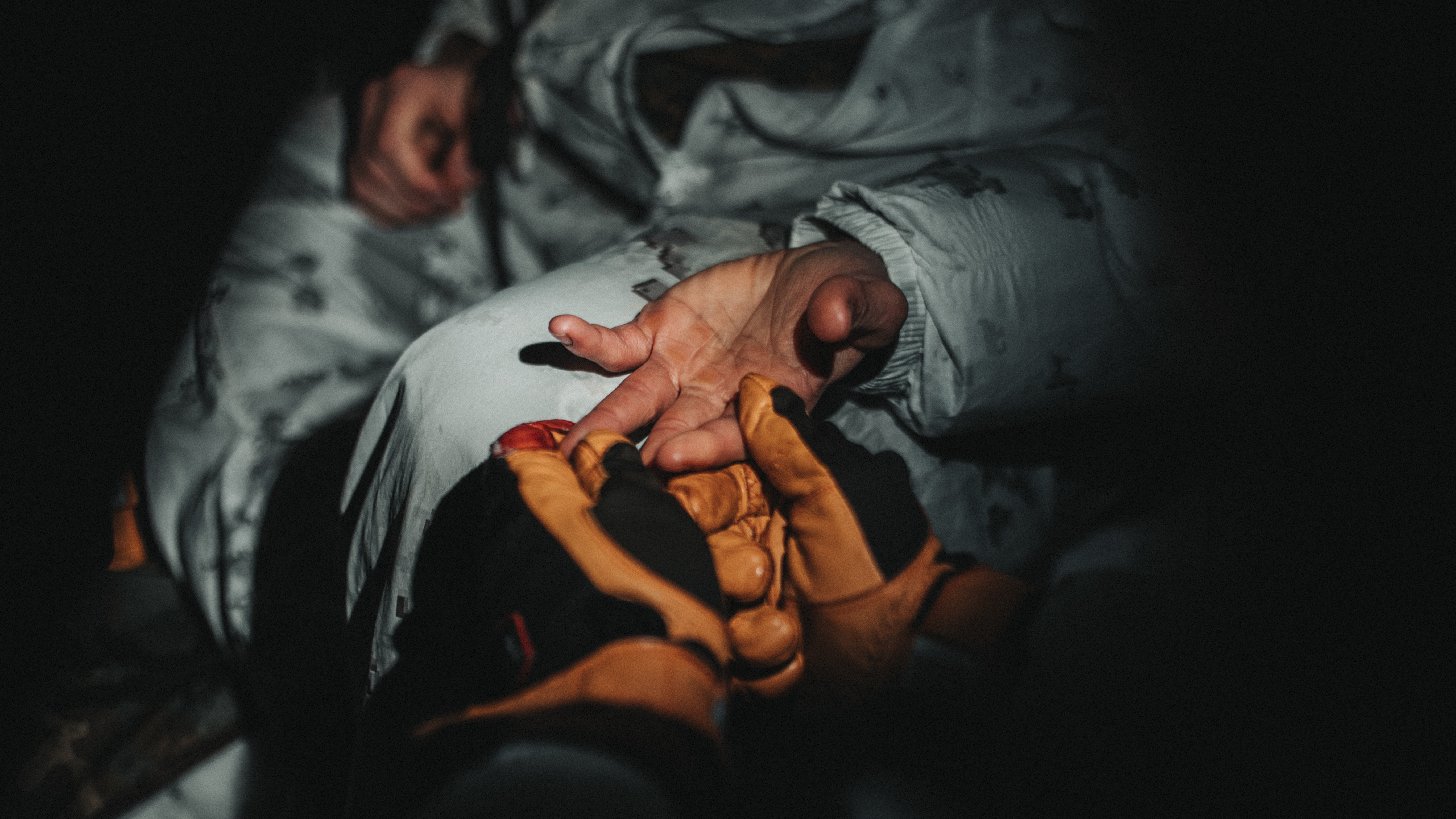
6 minute read
Treating Frostbite & Hypothermia in Austere Environments
Risk Management article by Special Warfare Operator Chief Tyler Harrington , Naval Safety
While conducting a week-long field training exercise in Kodiak, Alaska, one member of our team suffered frostbite on all toes of both feet to the mid-foot. During the training, the member said he noticed numbness in his toes, but didn’t want to say anything because he thought everyone’s feet were cold.
Frostbite is a serious medical condition requiring urgent treatment at a medical facility. Extremities, fingers and toes, and exposed areas such as ears and face, are most commonly affected. In an austere or remote environment, frostbite is extremely difficult to treat because the conditions that led to frostbite probably still exist – even after rewarming.
At the end of the training after returning to base, the member removed his boots. Seeing his toes were completely white with no signs of circulation, he began to rewarm his toes in the shower with warm water while massaging his feet.
Rewarming should be done in a safe environment when there is no risk of refreezing the area. As the area is rewarmed, blood begins to flow again, and swelling will start soon after. If the patient’s feet are affected, as difficult as it may be, the patient might need to walk out or at least to a point they can be reached by medevac before rewarming can begin. Alternatively, they may lose all ability to walk and will need to be carried out if in a remote area. While the area is frozen, it is more durable than after thawing it. For this reason, you should not try to rewarm until you know you can keep the area warm.

As the tissue thaws, blood begins to flow again, and an inflammation response starts. The affected area swells rapidly. If the feet are affected, this could prevent the patient from walking or getting their shoes back on. Swelling increases pressure in the tissue and prevents blood from flowing normally, which can cause compartment syndrome, a medical issue where muscle tissue dies because it is under too much pressure to maintain profusion and becomes gangrenous.
The restricted blood flow makes the area more susceptible to frostbite a second time. That is why it is important to make sure you are not in an area where the patient may be re-exposed to frostbite.
Tempting as it may be to rub the affected area, this will lead to increased damage. Picture a raw steak. It is very flexible and easy to bend. Now freeze the steak. Muscle tissue is approximately 75% water. As water freezes, it expands 9%. Sharp ice crystals form in the tissue. As the steak bends, the frozen tissue tears apart (see figure 1). Similarly, during the rewarming process following frostbite, rubbing or massaging the area is not recommended because the affected tissue can move and tear while the frozen crystals stab and rip into the area around it. Being that it is still numb, the person massaging the area has no idea that they are doing more damage by driving tiny icicles around inside their frozen body part as it starts to thaw. This creates more severe damage than the frostbite itself.

Urgent treatment is essential to preserve the affected area. Rewarming should be done slowly to prevent further harm, including reperfusion injury, platelet aggregation, blisters and blood vessel spasms. Ideally, immerse affected area in warm water (104°-108°F) for 20 - 30 minutes. Avoid using electric heaters or hair dryers, as they can cause burns due to lack of sensation. Passive rewarming with body heat and blankets is an acceptable alternative. Treat the patient using ibuprofen for swelling and consider advanced provider administered medications if pain is severe. Heparin encapsulated topical sprays are in development for onsite treatment. This would maintain perfusion and reduce swelling, possibly preserving the extremity. Transporting the patient to higher-level medical care expediently is essential.
Re-warming is just the first step in treatment. Frostbite takes a long time to heal depending on the amount of affected area, and in severe cases, amputation may be necessary. The severity of damage cannot be assessed until the tissue is thoroughly warmed. Prognosis depends on grade of damage (see Figure 2).

Prevention of frostbite is key. Dress appropriately for the environment. Ensure proper-fitting boots with adequate air space to insulate. Tight-fitting boots or too many layers of socks can potentially restrict circulation. Have extra supplies to replace wet gloves or socks as needed and be sure to check the condition of the feet at this time.
As stated above, the team member with frostbitten toes was rubbing his feet, trying to restore circulation. As his feet and toes re-warmed, they began to swell up larger than golf balls and turn purple. It became very painful in the mid-foot region where the healthy tissue stopped, and the blistered swollen tissue started. He was transported to a hospital for definitive care. Fortunately for the team member, the medical team was able to save his toes.
Learn from others’ painful events so you don’t have to re-learn it yourself.

Preventing frostbite is key.
Dress appropriately for the environment.
□ Synthetic or wool hat that covers ears
□ Balaclava to protect neck and face
□ Base layer synthetic or wool to wick and dry
□ Middle layer of fleece or puffy jacket
□ Outer waterproof layer to shield from wind and moisture
□ Waterproof and insulated gloves or mittens
□ Noncotton socks
□ Waterproof and insulated proper-fitting boots











